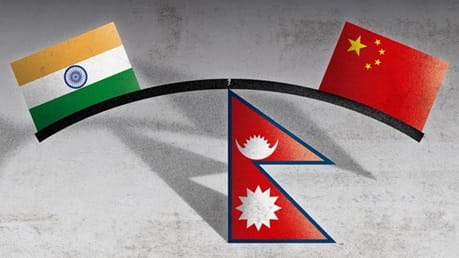In recent years, significant changes have been observed in the relationship between China and Nepal. Nepal has embraced the "new framework" of China's ambitious project, the Belt and Road Initiative (BRI). This development is poised to influence regional geopolitics profoundly, while also having a substantial impact on India-Nepal relations. This article explores the nuances of China-Nepal friendship, its economic and political dimensions, and its implications for India.
1. Historical Perspective on China-Nepal Relations
The ties between Nepal and China have historically been rooted in trade and cultural exchanges.
- Before 1975: Nepal relied predominantly on India. However, during the 1950s, China's involvement in Tibet compelled Nepal to include China in its foreign policy framework.
- 1960s: China began providing military and economic assistance to Nepal, causing discomfort in India.
- Post-1975: Nepal increased its economic engagements with China, yet it did not weaken the traditional foundation of India-Nepal relations.
In recent years, however, China has employed economic and political strategies to strengthen its foothold in Nepal.
2. Belt and Road Initiative (BRI): What Is This Project?
The Belt and Road Initiative, previously known as "One Belt, One Road," is China's ambitious global project.
- Objective: Enhance trade and connectivity across Asia, Africa, and Europe.
- Strategic Importance: BRI allows China to influence the economic and political landscapes of other nations.
- Nepal’s Role: Nepal's strategic location in the Himalayan region makes it pivotal for BRI.
Under BRI, Nepal has been proposed to be integrated into the "Himalayan Multi-Dimensional Connectivity Network," aiming to establish Nepal as a hub for regional trade and transportation.
3. Nepal’s Participation in BRI
Nepal has agreed to the "new framework" of BRI, marking a significant step in its engagement with China.
- Economic Assistance: China has extended "aid and technical assistance" to Nepal, comprising grants and loans.
- Strategic Goals: China aims to develop Nepal into a regional center, which could diminish India's influence in the Himalayan region.
However, ignoring the risks associated with BRI could have serious consequences for Nepal.
4. China’s Debt-Trap Diplomacy
China is known for leveraging its "debt-trap diplomacy" to gain strategic advantages over developing countries by offering them massive loans.
- Notable Examples:
- Sri Lanka: Leasing of Hambantota Port.
- Pakistan: China's control over Gwadar Port.
- Maldives: Strategic agreements in exchange for debt.
Nepal faces a similar risk. If it fails to repay the debt incurred from Chinese projects, it may lose control over critical assets.
5. Challenges for India
The growing closeness between China and Nepal presents multiple challenges for India:
(i) Geopolitical Impact:
- Nepal acts as a buffer state between India and China.
- China’s presence in Nepal through BRI could threaten India’s northern border security.
(ii) Cultural and Economic Influence:
- China is promoting its currency (Renminbi) and language (Mandarin) in Nepal.
- This could weaken the cultural and trade ties between India and Nepal.
(iii) Trade Dependency:
- India remains Nepal's largest trading partner.
- Strengthened trade relations between Nepal and China might reduce Nepal's dependency on India.
6. Potential Risks for Nepal
Nepal’s involvement in BRI comes with significant risks:
(i) Debt-Trap Concerns:
- The terms of Chinese loans are often opaque.
- Failure to repay these loans could jeopardize Nepal’s sovereignty.
(ii) Environmental and Social Impact:
- Large infrastructure projects in the Himalayan region could harm the environment.
- Local communities may face displacement and other socio-economic challenges.
(iii) Political Instability:
- China's influence may create internal political instability in Nepal.
- Conflicts between pro-India and pro-China factions in Nepal could escalate.
7. Reviving India-Nepal Relations
India and Nepal share historical, cultural, and geographical bonds. However, recent years have seen China’s attempts to pull Nepal away from India. To counter this, India must take strategic steps:
(i) Enhancing Economic Cooperation:
- Invest in infrastructure projects in Nepal.
- Provide economic aid and trade incentives to Nepal.
(ii) Strengthening Cultural Ties:
- Promote cultural and religious tourism.
- Revive shared historical and traditional connections between India and Nepal.
(iii) Diplomatic Engagement:
- Conduct high-level diplomatic dialogues with Nepal to counterbalance China's influence.
- Emphasize to Nepal the long-term benefits of its relationship with India.
8. Conclusion: The Triangular Balance Between India, Nepal, and China
China's growing influence in Nepal's foreign policy serves as a warning for India. However, Nepal must recognize that China's debt-trap diplomacy could harm its economic and political interests.
For India, it is imperative to strengthen its ties with Nepal and take proactive measures to safeguard its strategic interests. BRI's penetration into Nepal marks a critical juncture not only for India but for the entire South Asian region. It calls for careful diplomacy and strategy to maintain the balance.
Additional Insights
- China’s Soft Power in Nepal: China has also been investing in Nepal's media and educational institutions, promoting narratives that favor its policies.
- India’s Role in Regional Stability: India's historical role as a stabilizing force in South Asia gives it a moral and strategic edge. Leveraging this can help counter China’s influence.
- Global Implications of BRI: Nepal’s involvement in BRI could serve as a case study for how small nations navigate the complexities of partnerships with global powers.
India’s efforts to counter China’s influence in Nepal must prioritize mutual trust and respect while addressing Nepal’s development needs effectively. Through a combination of diplomacy, cultural outreach, and economic investments, India can work to sustain its longstanding relationship with Nepal.





















0 Comments